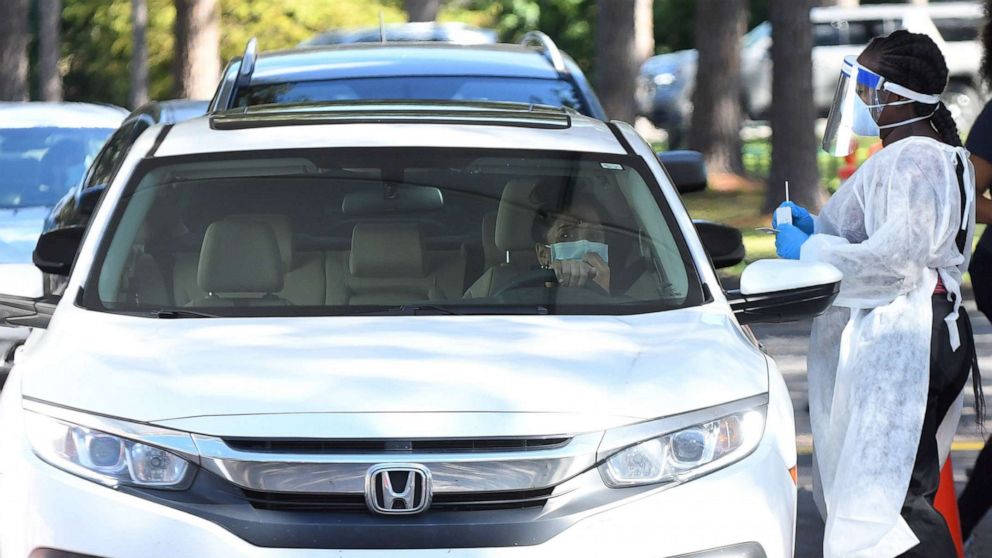


Since the onset of the coronavirus pandemic, we’ve all learned that six feet is the ideal distance to keep away from others and help slow the spread of the disease.
But when you’re traveling in a car, staying six feet away from other passengers is difficult, if not impossible, depending on the vehicle.
And although the Centers for Disease Control and Prevention (CDC) says people should avoid cars with people who aren’t in your household, traveling by car with those who aren’t in your bubble is sometimes unavoidable.
MORE: Expert tips for safe holiday shoppingWhile it may seem like there aren’t any solutions to prevent COVID from spreading in a car, researchers at Brown University say reducing the spread of aerosol transmissions is feasible by simply rolling down a window.
Over the weekend, a group of Brown University researchers published a study looking at airflow patterns inside a car using computer models to see if there were ways to reduce aerosol transmissions while sharing a ride.
The study played out scenarios for a compact car with two people in it: a driver and one person sitting in the back row behind the passenger seat. When the heater was on in the vehicle and the windows were up, aerosols were also trapped, circulating between the two.
“When the windows are up, that was the lowest level of ventilation that we observed compared with the windows open,” said Brown University researcher Kenny Breuer.
MORE: Nurses, doctors use social media to plead for public to take COVID-19 seriously as cases surgeAlso, researchers found that blasting the car’s air conditioner or heater didn’t circulate air nearly as well as opening a few windows, which was the most effective way to diffuse aerosol particles.
“That’s not surprising because we would expect that the more windows are open, the more circulation of air there is and the easier it is to flush any contaminants out of the car,” said Breuer.
But during these cold winter months, while it makes sense to open the window closest to you, the Brown University study found that opening the window across from you actually helps optimize the airflow more, although their findings may change depending on the type of car and number of passengers.
If there is one driver and one rear passenger in a compact car, for example, the study recommends opening the front passenger window and the window behind the driver.
MORE: Is it safe to travel this year for the holidays amid the COVID-19 pandemic? Consider these risksThe CDC also recommends sitting as far apart as possible while in a car, and says wearing face masks in any confined space, including cars, is crucial.
Infectious disease experts also say that more research still needs to be done.
“We definitely need more studies to actually assess what this means in terms of the transmissibility of the virus to people inside the vehicle,” said Dr. Gavin Harris, assistant professor of infectious diseases at Emory University.